The term “demountable architecture” describes buildings, installations and interiors that were designed to be easily taken apart for reuse or recycling. Usually consisting of lightweight components, they are designed specifically to be erected and dismantled on many occasions, promoting sustainable design and alternative construction practices.
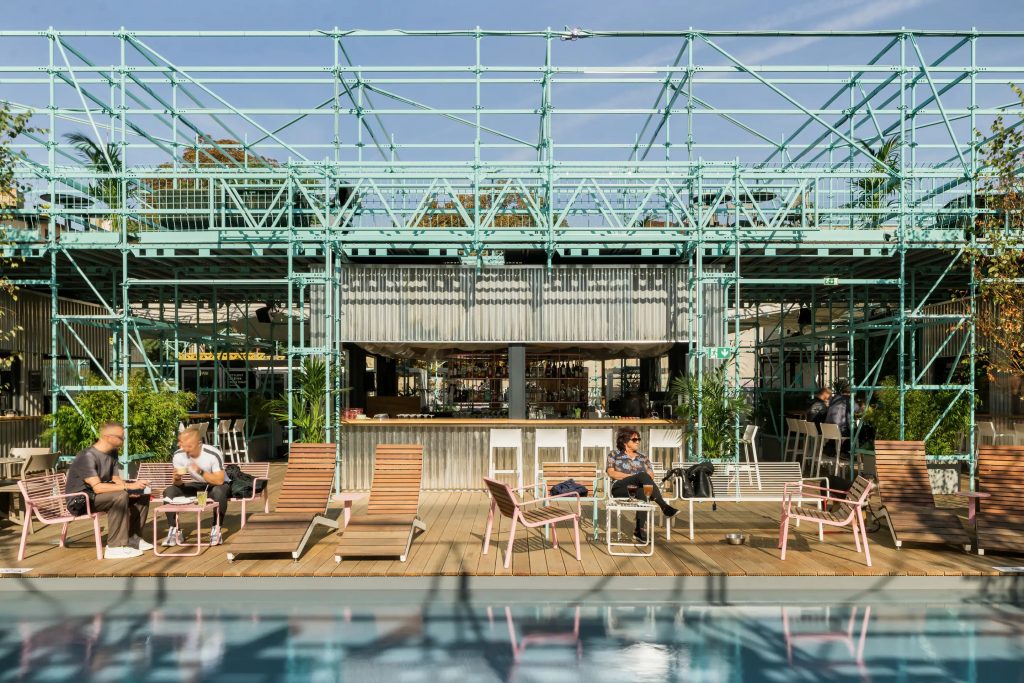
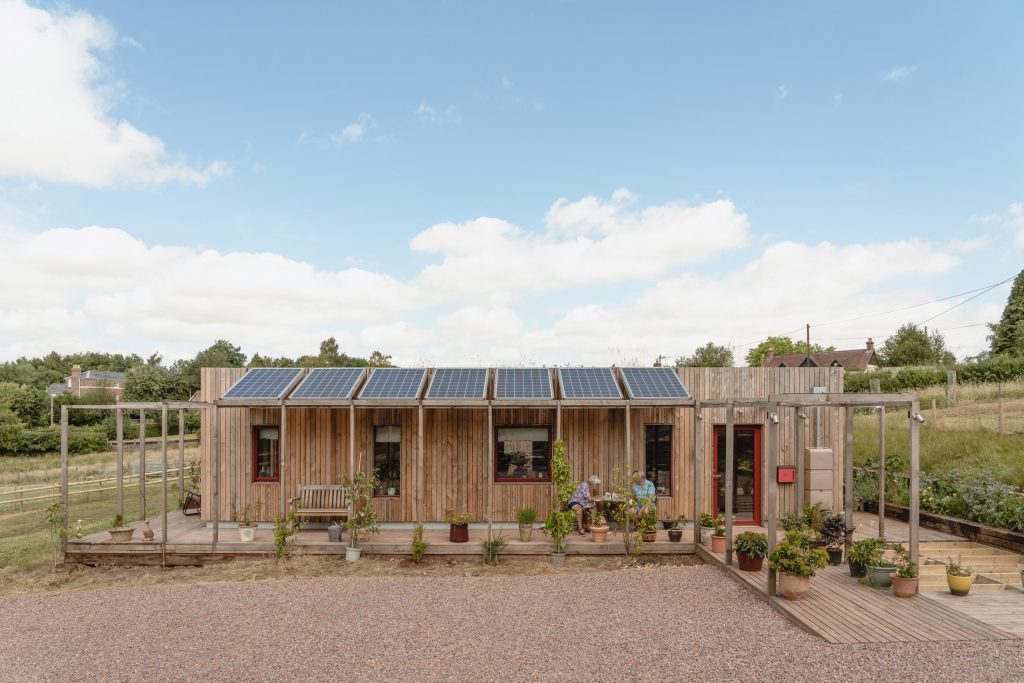
Nest House by Studio Bark
Conceived as part of the pioneering student build programme No Building As Usual, Nest House is a ‘circular’ wooden dwelling, which was designed to be fully demountable at the end of its useful life.
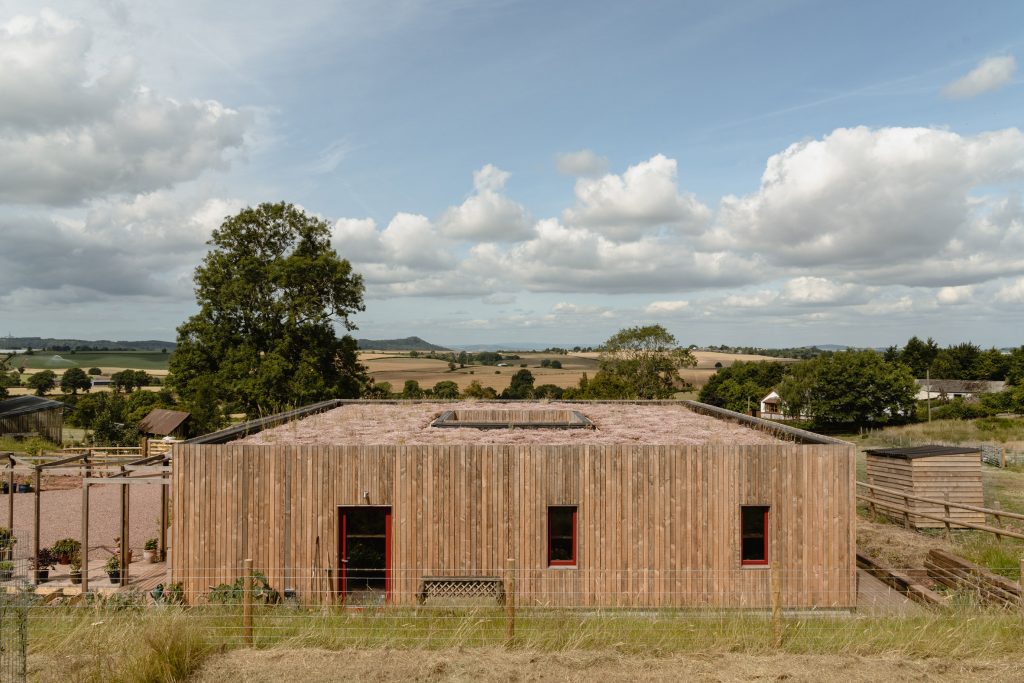
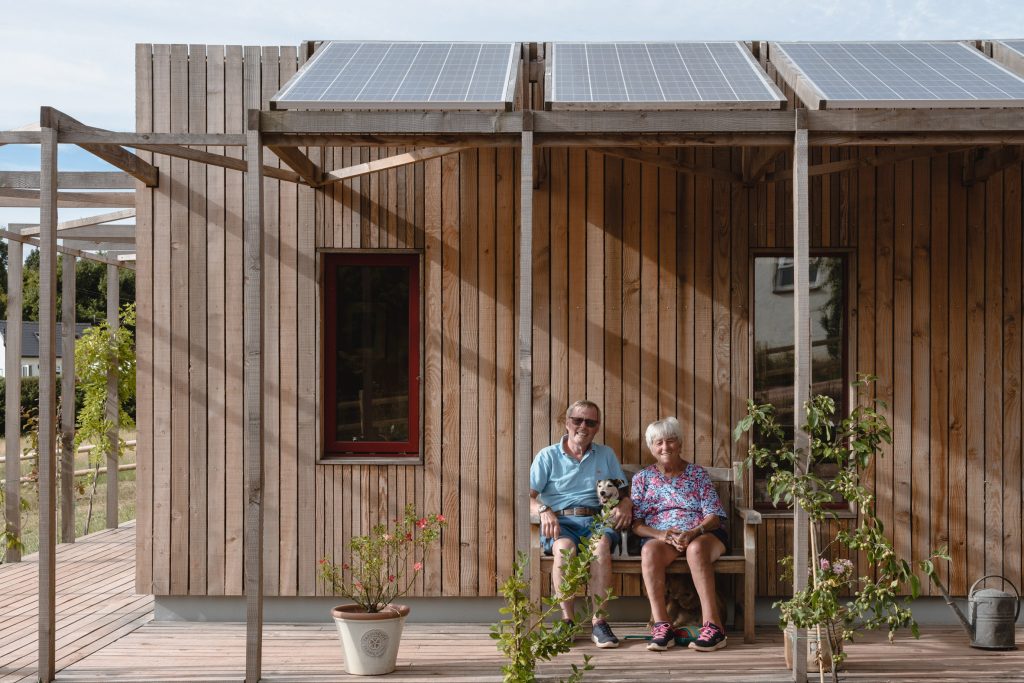
Nest House by Studio Bark
The accessible single-storey house was designed by British architecture practice Studio Bark and built in collaboration with a group of students for a retired couple who wanted a low-impact and accessible home on a farmstead in Herefordshire, UK.
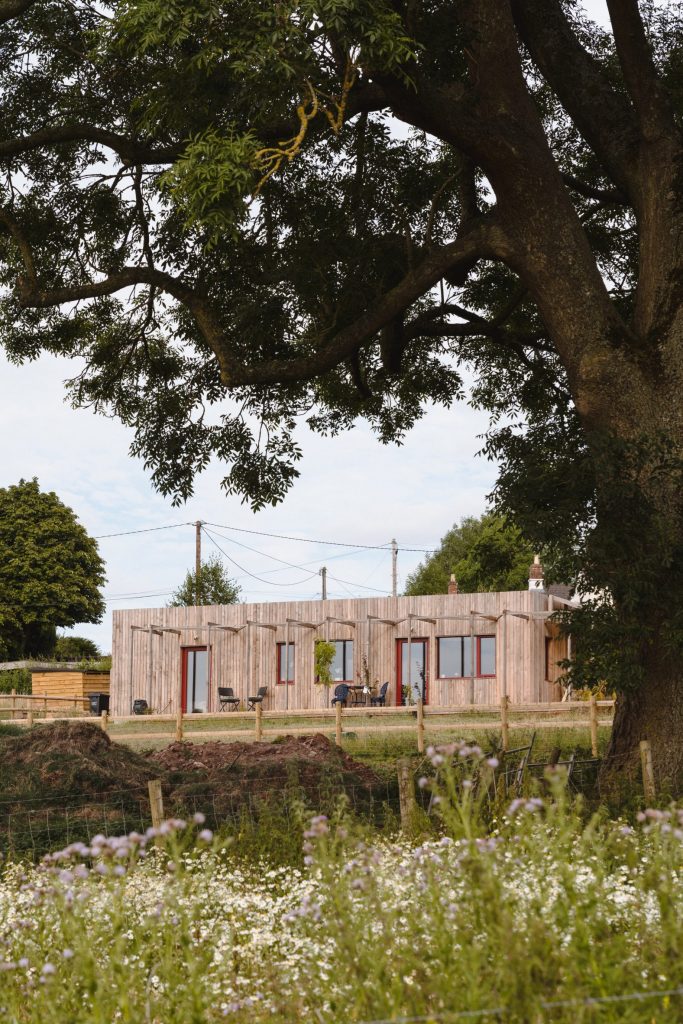
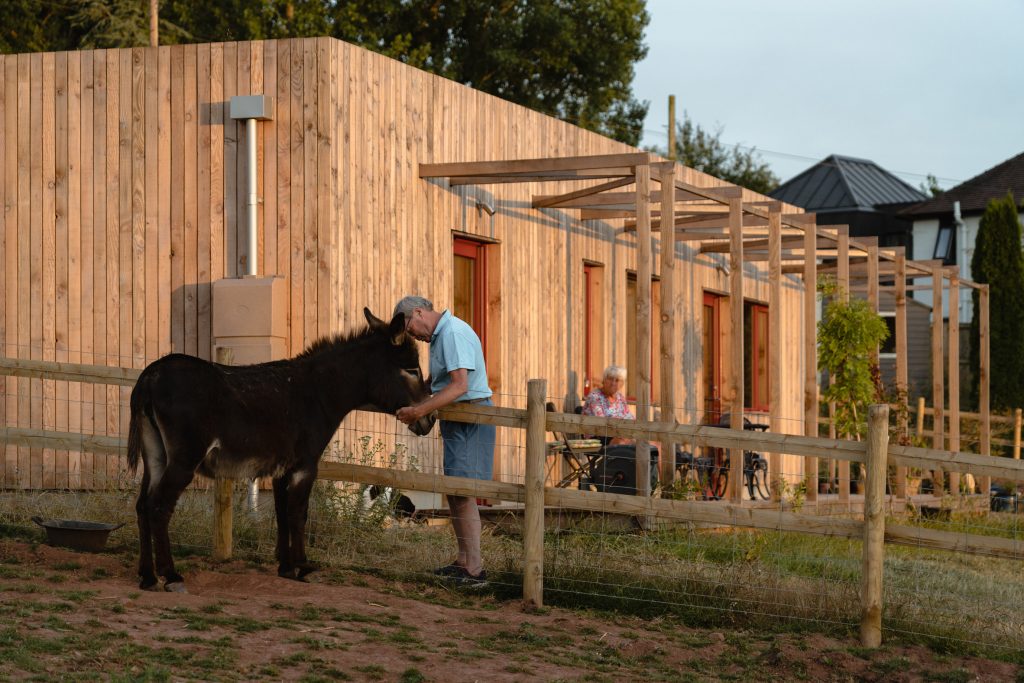
Nest House by Studio Bark
Constructed using Studio Bark’s modular and demountable U-Build system, the house is free of concrete and structural steel and instead uses reclaimed timber foundations, and timber floor and roof beams. The building is integrated into the sloped site sitting in front of the retaining walls and raised on jackpads made from recycled plastic.

Interim building for the Württembergische Staatstheater Stuttgart by a+r Architects and NL Architects
The collaborative design by a+r Architects and NL Architects was selected as the winner proposal in the international competition for the temporary new home of the Württembergische Staatstheater Stuttgart. This interim structure will accommodate the Stuttgart State Opera and the Stuttgart Ballet during the renovation of their current venue, the Littmann Building.
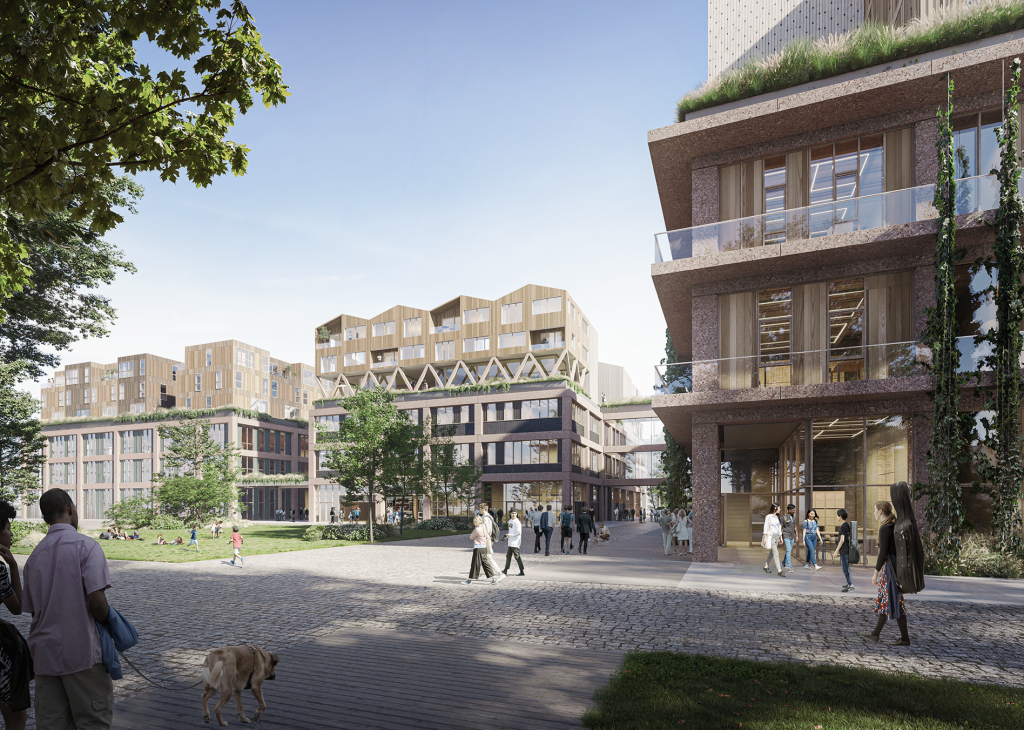
Interim building for the Württembergische Staatstheater Stuttgart by a+r Architects and NL Architects
The new complex includes the production areas such as rehearsal rooms, workshops for stage designs, offices, storage spaces and more, spread across three city blocks. The roof of the opera house serves as the foundation for an innovative residential development: a village on the rooftop of the opera house. Production and housing are combined to create a place of community. Once the opera and ballet have returned to their original venue, the production facility will be repurposed as a Makers City.
The project has been developed with a focus on considering the future reuse of the interim opera building to avoid future demolition. From the very beginning, the team aimed to preserve a maximum of the interim opera as a permanent structure and achieve as much re-use as possible.
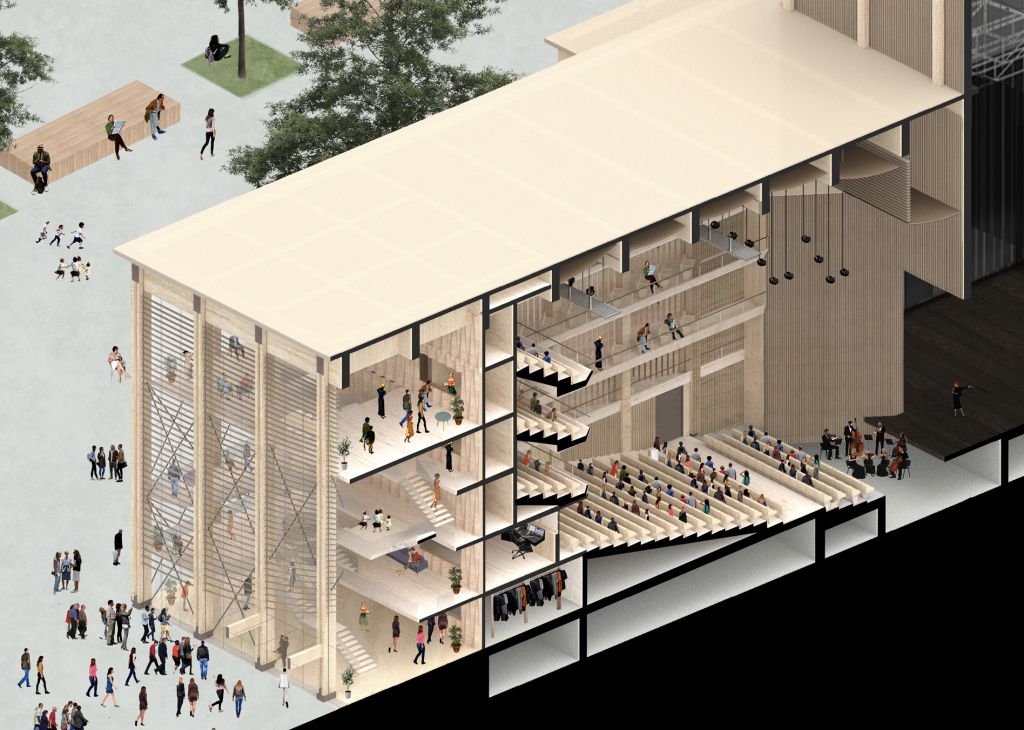
Interim building for the Württembergische Staatstheater Stuttgart by a+r Architects and NL Architects
The built structures allow a high degree of flexibility for various new commercial uses in the subsequent Makers City. Only the opera’s central features, such as the auditorium and stage, are designed in wood construction to allow future deconstruction. The structures that will be preserved are planned as a robust, CO2-reduced concrete skeleton. This is reflected in the façades: wooden façades in the auditorium area, the permanent structure of the opera venue with concrete columns and prefabricated, non-load-bearing wooden panel elements, and on top of that, the village built in wood.

Interim building for the Württembergische Staatstheater Stuttgart by a+r Architects and NL Architects
A complete village on the rooftop, which includes even a central village square, offers the advantages of both living in the countryside and yet in the city. The vertical transition between the opera and the residential area is enhanced by an all-round belt of greenery. The team also aims to cultivate a vertical park on the façade that will serve as a new connection between the village and the public space.

Manifesto Market by Chybik + Kristof (also header image)
Another public building designed to be easily modified or relocated is a temporary food market in Prague by Czech studio Chybik + Kristof. Located in the city’s Andel district, the modular structure of blue scaffolding has been built for the hospitality brand Manifesto Market by reusing and adapting materials, including corrugated aluminium sheets, lighting and furniture, from the market’s previous iteration in Smichov.
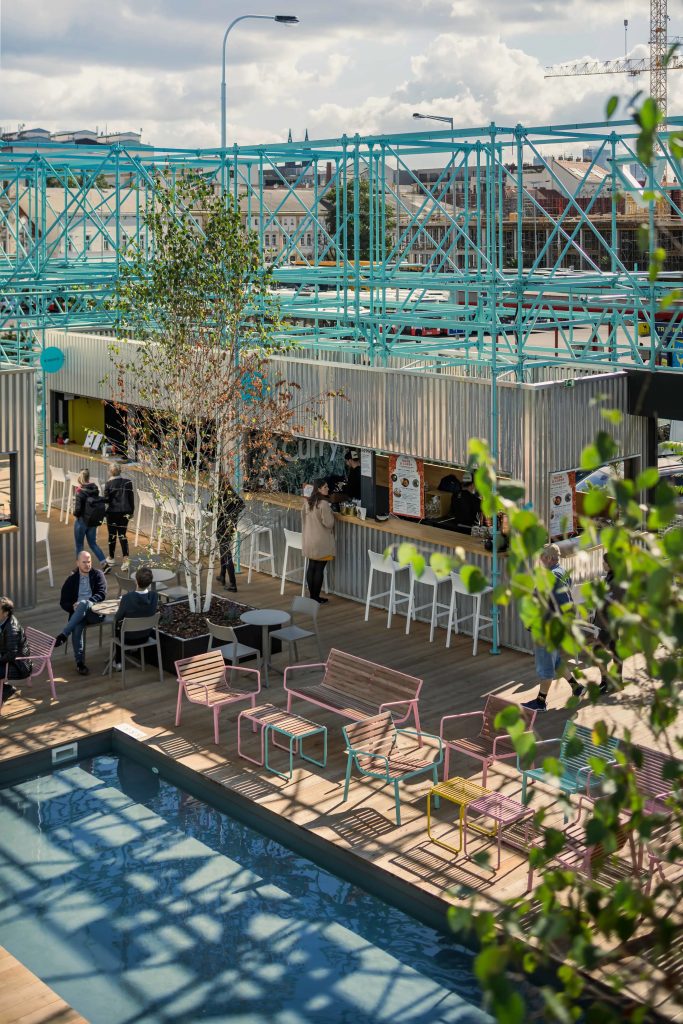
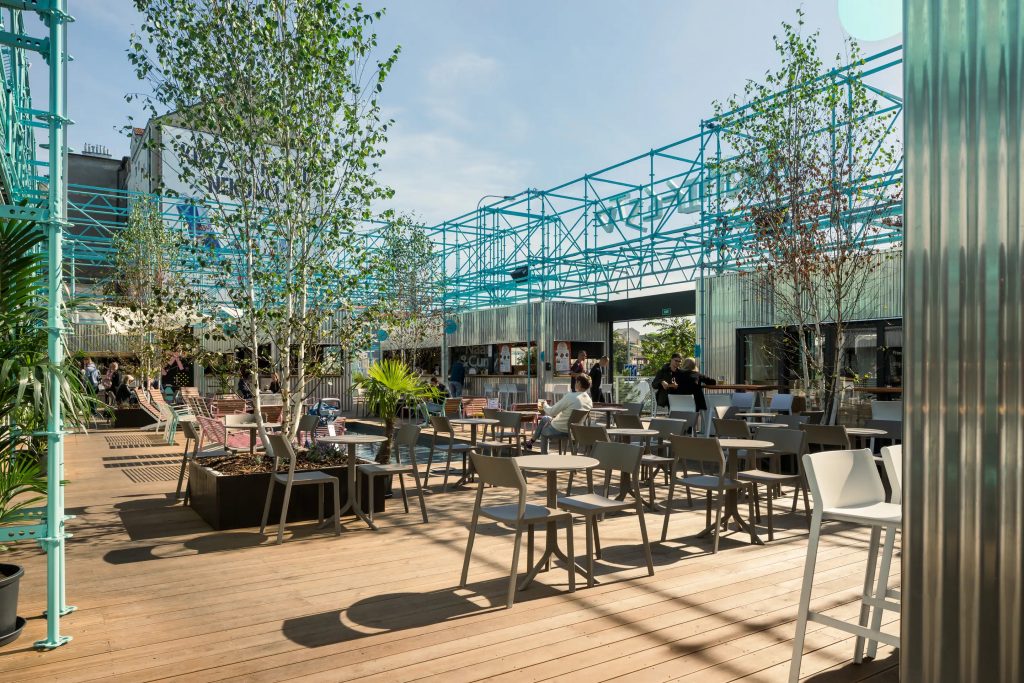
Manifesto Market by Chybik + Kristof
Raised on wooden decking that conceals its technical services, the scaffolding serves as a terrace that supports a series of corrugated metal kiosks organised around small courtyards, seating and a shallow pool. Each of the courtyards, characterised by unique components such as furniture, lighting, and greenery, provides meaningful experiences for visitors and the local community.
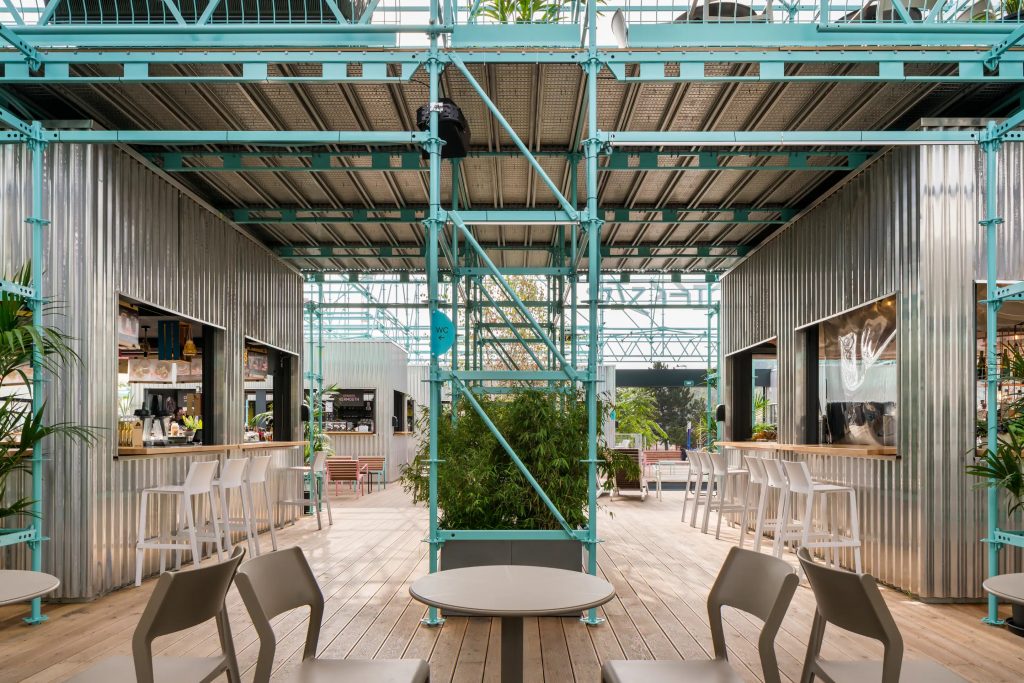
Manifesto Market by Chybik + Kristof
To limit the environmental impact of the project, it is powered by clean energy from renewable sources and designed to be reversible. The modular concept makes it compatible with various spaces, allowing for its reuse in future locations. Its scaffolding can be easily disassembled and adapted to future sites once the Andel market closes.